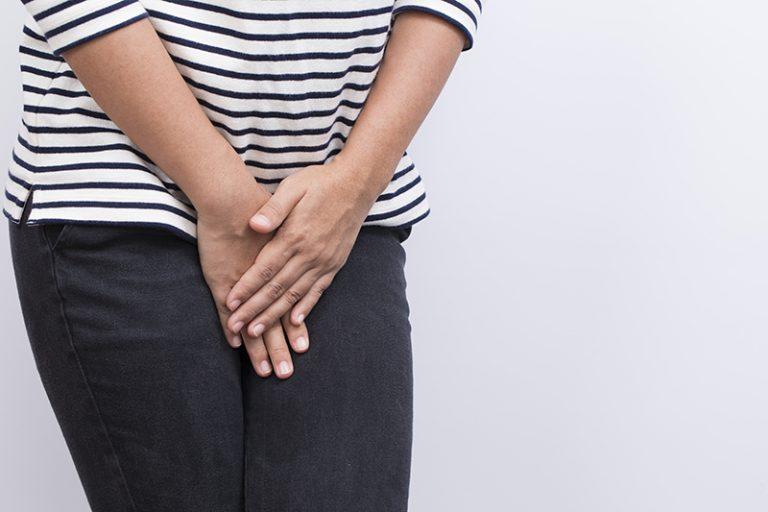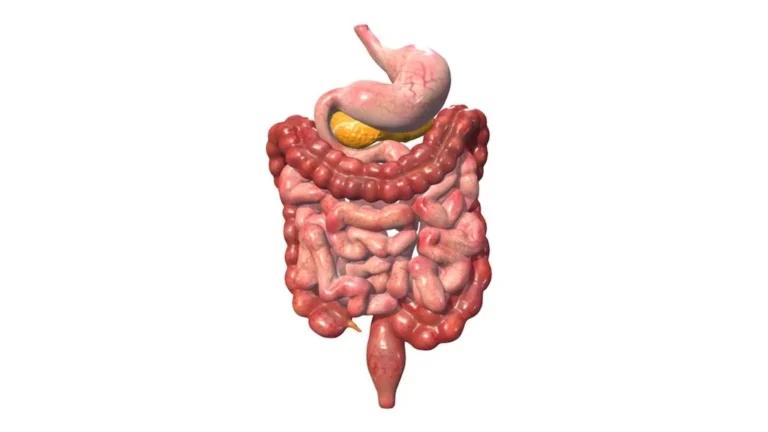Urinary Incontinence
Get valuable insights into Urinary Incontinence, including its causes, symptoms, prevention strategies, and treatment options, while also learning about how you can lower the cost of the medications used to treat Urinary Incontinence.
MEDICAL INFORMATION
Urinary Incontinence Key Facts
Related Medications
Urinary incontinence is a common condition that affect the urinary system. Urinary incontinence refers to the involuntary leakage of urine and can have a significant impact on an individual’s quality of life. Here, we aim to provide you with an in-depth overview of urinary incontinence including the causes, symptoms, diagnosis, and treatment options.
What is urinary incontinence?
Urinary incontinence refers to the involuntary leakage of urine, resulting in the loss of bladder control. It is a common condition that can affect people of all ages, but it is more prevalent among older adults. Urinary incontinence can range in severity from occasional leakage to a complete loss of bladder control. It can have a significant impact on a person’s physical, emotional, and social well-being.
What are different types of urinary incontinence?
Stress incontinence
This occurs when urine leaks during activities that put pressure on the bladder, such as coughing, sneezing, laughing, or lifting heavy objects. It is often caused by weak pelvic floor muscles or a weakened sphincter muscle.
Urge incontinence
Also known as “overactive bladder,” this type of incontinence is characterized by a sudden and intense urge to urinate, followed by involuntary urine leakage. It may be caused by an overactive detrusor muscle in the bladder or nerve problems.
Overflow incontinence
This occurs when the bladder doesn’t empty completely, leading to constant or frequent dribbling of urine. It can be caused by an obstruction or blockage in the urinary tract, weakened bladder muscles, or nerve damage.
Functional incontinence
In this type of incontinence, a person has normal bladder control, but other physical or cognitive limitations prevent them from reaching the bathroom in time. It is often seen in individuals with mobility issues, dementia, or other conditions that affect their ability to recognize or respond to the need to urinate.
Mixed incontinence
This refers to a combination of different types of incontinence, such as stress and urge incontinence occurring together.
What are the causes of urinary incontinence?
Urinary incontinence can be caused by various factors that affect the normal functioning of the urinary system. Understanding the underlying causes is important in determining the appropriate treatment approach. Here are some common causes of urinary incontinence:
Weak Pelvic Floor Muscles
The pelvic floor muscles play a crucial role in supporting the bladder and controlling urinary continence. Weakened pelvic floor muscles can occur due to factors such as childbirth, pregnancy, aging, obesity, chronic coughing, or repetitive heavy lifting. This can lead to stress incontinence, where activities such as coughing, sneezing, or exercising put pressure on the bladder and result in urine leakage.
Nerve Damage or Dysfunction
Nerve signals between the bladder and the brain control the storage and release of urine. Any condition or injury that affects the nerves involved in bladder control can disrupt the normal coordination and lead to urinary incontinence. Examples include spinal cord injuries, multiple sclerosis, stroke, diabetes, and certain surgeries or medical procedures that may damage the nerves.
Hormonal Changes
In women, hormonal fluctuations that occur during pregnancy, childbirth, and menopause can contribute to urinary incontinence. Reduced estrogen levels during menopause can weaken the urethral and vaginal tissues, compromising bladder control.
Urinary Tract Infections (UTIs)
UTIs can cause temporary urinary incontinence, particularly in older adults. The infection can irritate the bladder, resulting in a sudden urge to urinate and potential leakage.
Medications
Some medications can affect bladder function and contribute to urinary incontinence. Examples include diuretics, alpha-blockers, sedatives, antidepressants, and some antipsychotics. It’s important to discuss medication-related side effects with a healthcare professional.
Underlying Medical Conditions
Certain medical conditions can increase the risk of developing urinary incontinence. These include chronic cough, obesity, constipation, pelvic organ prolapse, prostate problems (in men), neurological disorders (such as Parkinson’s disease or multiple sclerosis), and certain types of cancer (e.g., bladder or prostate cancer).
Lifestyle Factors
Lifestyle choices, such as excessive caffeine or alcohol consumption, smoking, inadequate fluid intake, and poor dietary habits, can contribute to urinary incontinence by irritating the bladder or affecting bladder muscle control.
It’s worth noting that the causes of urinary incontinence can vary depending on the type of incontinence (e.g., stress, urge, overflow). A comprehensive evaluation by a healthcare professional, including a medical history review, physical examination, and possibly diagnostic tests, can help determine the underlying cause of urinary incontinence and guide appropriate treatment strategies.
What are the risk factors of urinary incontinence?
Urinary incontinence is the involuntary leakage of urine, and several risk factors can increase the likelihood of developing this condition. These risk factors include:
Gender
Urinary incontinence is more common in women than in men. This is partly due to anatomical differences, such as the shorter urethra in women, hormonal changes during pregnancy and menopause, and the impact of childbirth on the pelvic floor muscles.
Age
The risk of urinary incontinence increases with age. The muscles and tissues that support the bladder and urethra may weaken over time, leading to a loss of urinary control. Additionally, age-related medical conditions, such as prostate enlargement in men and pelvic organ prolapse in women, can contribute to urinary incontinence.
Pregnancy and Childbirth
Women who have been pregnant or have given birth vaginally have an increased risk of urinary incontinence. The hormonal changes during pregnancy and the stress placed on the pelvic floor muscles during childbirth can weaken the muscles and lead to urinary leakage.
Obesity
Excess body weight puts increased pressure on the bladder and pelvic floor muscles, increasing the risk of urinary incontinence.
Chronic Conditions
Certain chronic conditions, such as diabetes, neurological disorders (e.g., multiple sclerosis, Parkinson’s disease), and chronic coughing or respiratory conditions, can increase the risk of urinary incontinence.
Smoking
Smoking has been associated with an increased risk of urinary incontinence. Chronic coughing from smoking can put strain on the pelvic floor muscles and weaken their function.
Family History
There may be a genetic predisposition to urinary incontinence. Having a family history of the condition increases the likelihood of developing it.
Pelvic Surgeries
Surgeries involving the pelvic region, such as pelvic organ prolapse repair, hysterectomy, or prostate surgery, can sometimes damage or weaken the pelvic floor muscles and contribute to urinary incontinence.
Certain Medications
Some medications, such as diuretics, sedatives, muscle relaxants, and certain blood pressure medications, may affect bladder function and increase the risk of urinary incontinence.
It’s important to note that the presence of these risk factors does not guarantee that an individual will develop urinary incontinence. Each person’s risk profile is unique, and other factors, such as lifestyle choices and overall health, can also influence the development of the condition. If you have concerns about urinary incontinence, it is advisable to consult with a healthcare professional for a proper evaluation and appropriate management.
What are the symptoms of urinary incontinence?
common symptoms associated with urinary incontinence include
Involuntary Urine Leakage
The primary symptom of urinary incontinence is the unintentional release of urine. The amount of leakage can range from a few drops to a full bladder emptying, depending on the type and severity of incontinence.
Increased Frequency of Urination
Individuals with urinary incontinence may experience a frequent need to urinate. They may find themselves needing to visit the bathroom more often than usual, even if the bladder is not full.
Urgency to Urinate
There is often a sudden, strong urge to urinate, which can be difficult to control. The urgency may be accompanied by a sensation of pressure or discomfort in the bladder.
Nocturia
Nocturia refers to waking up during the night to urinate. People with urinary incontinence may experience this symptom, disrupting their sleep patterns and causing sleep disturbances.
Stress-related Leakage
In cases of stress incontinence, leakage may occur during physical activities that put pressure on the bladder, such as coughing, sneezing, laughing, lifting, or exercising. The leakage is typically associated with the exertion or pressure applied to the abdominal area.
Urge-related Leakage
Individuals with urge incontinence often experience a sudden and intense urge to urinate, which can lead to leakage before reaching the bathroom in time. The urge may be triggered by specific events or activities, such as running water or unlocking the front door.
Functional Limitations
Some individuals may experience functional limitations that make it challenging to reach the bathroom in time due to physical or cognitive impairments. This functional incontinence can occur in conditions such as mobility issues, arthritis, dementia, or other factors that hinder a person’s ability to recognize or respond to the need to urinate.
Emotional and Psychological Impact
Urinary incontinence can have emotional and psychological effects, including embarrassment, loss of self-esteem, anxiety, and social withdrawal. It can significantly impact a person’s quality of life and daily activities.
It’s important to note that the symptoms may vary from person to person, and some individuals may experience a combination of different types of incontinence. If you are experiencing any of these symptoms, it is advisable to consult with a healthcare professional for an accurate diagnosis and appropriate treatment options tailored to your specific needs.
What are the treatment and management options for urinary incontinence?
The treatment and management options for urinary incontinence depend on the underlying cause, type, and severity of the condition. The goal is to improve bladder control, reduce or eliminate urine leakage, and enhance quality of life. Here are some common approaches used in the treatment and management of urinary incontinence:
Lifestyle Modifications
- Bladder training: This involves scheduled voiding and gradually increasing the time between bathroom visits to improve bladder capacity and control
- Fluid and diet management: Adjusting fluid intake, avoiding bladder irritants (such as caffeine and alcohol), and maintaining a healthy diet can help manage urinary incontinence
- Weight management: Maintaining a healthy weight can reduce pressure on the bladder and improve symptoms
- Smoking cessation: Smoking can worsen coughing and irritate the bladder, so quitting smoking is beneficial for bladder health
Pelvic Floor Exercises
- Kegel exercises: These exercises involve contracting and relaxing the pelvic floor muscles to strengthen them. Regular practice can improve bladder control and reduce stress incontinence. Physical therapists specializing in pelvic floor rehabilitation can provide guidance
Medication
- Anticholinergic medications: These medications help relax bladder muscles and reduce overactive bladder symptoms
- Topical estrogen therapy: For postmenopausal women, topical estrogen applied vaginally can help improve the strength and integrity of urethral and vaginal tissues
Medical Devices
- Pessaries: These are small, removable devices inserted into the vagina to support the bladder and reduce stress incontinence
- Urethral inserts: These small plugs or valves can be inserted into the urethra to prevent urine leakage during specific activities
Nerve Stimulation Therapies
- Electrical stimulation: Mild electrical pulses are used to stimulate the nerves that control bladder function, helping to improve muscle coordination and control
- Sacral nerve stimulation: This involves implanting a device that sends electrical impulses to the sacral nerves, which control bladder function
Behavioral Techniques
- Biofeedback: This technique helps individuals gain awareness and control over pelvic floor muscles using visual or auditory feedback
- Timed voiding: Setting a schedule for regular bathroom trips, even if there is no immediate urge, can help manage urinary incontinence
Surgical Interventions
In cases where conservative measures do not provide sufficient relief, surgical options may be considered. Examples include sling procedures for stress incontinence, artificial urinary sphincter implantation, and bladder neck suspension surgeries.
It’s important to consult with a healthcare professional to determine the most appropriate treatment options based on individual circumstances. A personalized treatment plan can be developed to address the specific type and severity of urinary incontinence, taking into account overall health and preferences.
How is urinary incontinence diagnosed?
The diagnosis of urinary incontinence typically involves a comprehensive evaluation by a healthcare professional, such as a urologist, gynecologist, or primary care physician. The diagnostic process aims to identify the underlying cause, type, and severity of urinary incontinence to guide appropriate treatment. Here are some common steps and techniques used in diagnosing urinary incontinence:
Medical History Review
The healthcare provider will ask you detailed questions about your symptoms, including the type and frequency of urine leakage, triggers or patterns, and any factors that worsen or improve the symptoms. They will also inquire about your medical history, including past surgeries, medical conditions, medications, and lifestyle factors.
Physical Examination
A physical examination may be conducted to assess factors that could contribute to urinary incontinence. This may involve a pelvic examination for women to evaluate the condition of the pelvic organs, muscles, and tissues. For men, a rectal examination may be performed to assess the prostate gland and surrounding structures.
Urine Analysis
A urine sample may be collected for analysis to check for any signs of infection, blood, or other abnormalities that could contribute to urinary incontinence.
Voiding Diary
Keeping a voiding diary can be helpful in tracking urinary habits over a certain period. It involves recording the time and amount of fluid intake, urine output, episodes of leakage, and associated activities or triggers. This information can provide valuable insights into patterns and help with diagnosis.
Bladder Function Tests
- Post-void Residual Measurement: This test measures the amount of urine remaining in the bladder after voiding. It can be done using ultrasound or a catheter to evaluate bladder emptying
- Urodynamic Testing: Urodynamic tests assess bladder and urethral function by measuring pressures and flow rates during bladder filling and emptying. These tests help evaluate bladder capacity, muscle coordination, and identify any abnormalities contributing to urinary incontinence
Imaging Studies
In some cases, imaging studies such as ultrasound, cystoscopy, or specialized radiographic tests may be recommended to visualize the urinary tract, bladder, and surrounding structures to identify any anatomical abnormalities or blockages.
What medications are used in urinary incontinence?
Anticholinergic medications:
- Oxybutynin (Ditropan, Oxytrol)
- Tolterodine (Detrol)
- Solifenacin (Vesicare)
- Darifenacin (Enablex)
- Trospium (Sanctura)
- Fesoterodine (Toviaz)
Beta-3 agonists:
- Mirabegron (Myrbetriq)
Topical estrogen (for stress incontinence in women):
- Estradiol vaginal cream or ring (Premarin, Vagifem)
Alpha-adrenergic agonists:
- Pseudoephedrine (Sudafed)
- Phenylephrine
Tricyclic antidepressants (TCAs):
- Imipramine (Tofranil)
- Amitriptyline (Elavil)
Botulinum toxin injections (for overactive bladder):
- OnabotulinumtoxinA (Botox)
What are the complications of urinary incontinence?
Urinary incontinence, if left untreated or unmanaged, can have several potential complications that can affect an individual’s physical, emotional, and social well-being. Below are some common complications associated with urinary incontinence:
Skin Problems
Constant exposure to urine can irritate and damage the skin, leading to skin infections, rashes, and sores. The moisture and acidity of urine can cause skin breakdown and increase the risk of developing pressure ulcers (bedsores) in individuals who are bedridden or have limited mobility.
(UTIs) Urinary Tract Infections
Incontinence can increase the risk of urinary tract infections. When urine is retained or leaks, bacteria can multiply and infect the urinary tract, leading to symptoms such as frequent urination, pain or burning during urination, cloudy or bloody urine, and pelvic discomfort.
Impact on Quality of Life
Urinary incontinence can significantly affect a person’s quality of life, leading to embarrassment, anxiety, and social isolation. It can interfere with daily activities, work, and personal relationships, causing emotional distress and a decrease in overall well-being.
Sleep Disturbance
Nocturnal enuresis (bedwetting) or nocturia (frequent urination at night) can disrupt sleep patterns, leading to poor sleep quality and fatigue. Constant waking up to urinate can result in daytime sleepiness and impact overall functioning and productivity.
Reduced Physical Activity
Fear of leakage or embarrassment may discourage individuals with urinary incontinence from participating in physical activities, exercise, or outings. This can lead to reduced physical fitness, muscle weakness, and potential weight gain or de-conditioning.
Falls and Fractures
In older adults, urinary incontinence can increase the risk of falls and fractures. Frequent trips to the bathroom, urgency, or the need to rush can pose hazards, especially in individuals with mobility issues or balance problems.
Emotional Psychological Impact
Living with urinary incontinence can cause emotional distress, embarrassment, loss of self-esteem, and depression. It can affect an individual’s self-confidence, body image, and overall mental well-being.
It’s important for individuals experiencing urinary incontinence to seek medical evaluation and discuss treatment options with healthcare professionals.
What urinary incontinence support organisations are there available to support me in the UK?
- Bladder & Bowel UK: Bladder & Bowel UK is a national charity organization that focuses on promoting bladder and bowel health. They provide support and information for individuals with UI and other bladder and bowel conditions. They offer a helpline, resources, and educational materials. They also work with healthcare professionals to improve continence services
- The Urology Foundation: The Urology Foundation is a UK charity that supports research, education, and awareness of urological conditions, including UI. They provide information resources, support for individuals with UI, and funding for urological research
- The National Institute for Health and Care Excellence (NICE): NICE is a UK organization that provides evidence-based guidelines for healthcare professionals. They offer guidelines and recommendations for the assessment and management of UI, which can help inform healthcare providers in delivering optimal care
- Age UK: Age UK is a national charity that provides support and resources for older people, including those with UI. They offer information, advice, and local services that can help individuals manage UI and maintain overall well-being
What urinary incontinence support organisations are there available to support me in the US?
- National Association for Continence (NAFC): The NAFC is a nonprofit organization dedicated to improving the quality of life for individuals with incontinence. They provide educational resources, support groups, a helpline, and advocacy efforts to raise awareness about incontinence and improve access to care
- The Simon Foundation for Continence: The Simon Foundation is a nonprofit organization that focuses on promoting awareness, education, and research in the field of incontinence. They offer information resources, a helpline, support groups, and assistance in finding healthcare providers who specialize in incontinence management
- American Urological Association (AUA): The AUA is a professional organization that provides resources for urologists and healthcare professionals. They offer patient information on various urological conditions, including UI, and provide a directory to help individuals find urologists in their area
- The National Institute of Diabetes and Digestive and Kidney Diseases (NIDDK): The NIDDK, a part of the National Institutes of Health, provides information and resources on various urological conditions, including UI. They offer educational materials, research updates, and clinical trial information related to UI and incontinence
- The American Geriatrics Society (AGS): The AGS is a professional organization dedicated to improving the health and well-being of older adults. They provide resources, guidelines, and educational materials on managing UI and incontinence in older adults
Summary
Urinary incontinence can significantly impact a person’s daily life and overall well-being. It is essential to understand the causes, symptoms, and available treatment options for this condition. By seeking appropriate medical evaluation and implementing targeted interventions, individuals with urinary incontinence can achieve improved bladder control, enhanced quality of life, and relief from associated symptoms. If you experience urinary incontinence, consult a healthcare professional for a comprehensive evaluation and personalized treatment plan tailored to your specific needs.
Medical Disclaimer
NowPatient has taken all reasonable steps to ensure that all material is factually accurate, complete, and current. However, the knowledge and experience of a qualified healthcare professional should always be sought after instead of using the information on this page. Before taking any drug, you should always speak to your doctor or another qualified healthcare provider.
The information provided here about medications is subject to change and is not meant to include all uses, precautions, warnings, directions, drug interactions, allergic reactions, or negative effects. The absence of warnings or other information for a particular medication does not imply that the medication or medication combination is appropriate for all patients or for all possible purposes.







